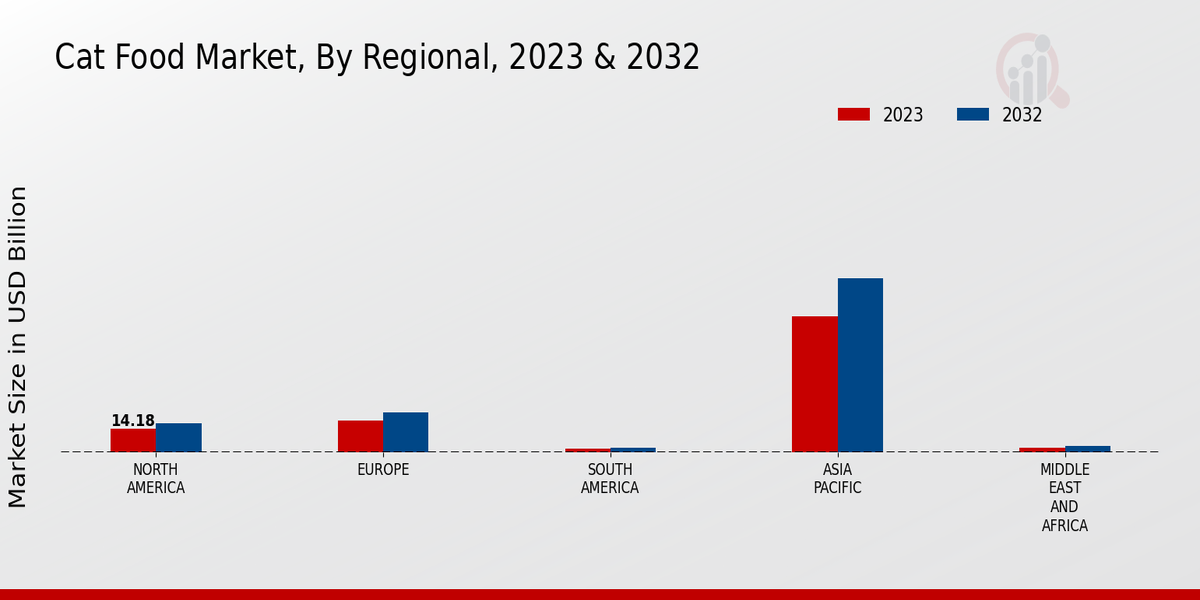E-commerce Growth
The Global Cat Food Market Industry is witnessing a transformation due to the rapid growth of e-commerce platforms. Online shopping offers convenience and a wider selection of cat food products, appealing to tech-savvy consumers. This trend is particularly pronounced in urban areas where busy lifestyles limit traditional shopping. E-commerce sales are expected to contribute significantly to the market's growth, as more consumers opt for home delivery services. The increasing penetration of internet access and mobile devices further supports this trend, indicating a potential shift in purchasing behavior that could reshape the market landscape.
Rising Pet Ownership
The Global Cat Food Market Industry experiences growth driven by an increase in pet ownership worldwide. As more households adopt cats as companions, the demand for cat food rises correspondingly. In 2024, the market is projected to reach 107.6 USD Billion, reflecting the growing trend of pet humanization. Pet owners are increasingly willing to invest in premium and specialized cat food products, which cater to the health and dietary needs of their pets. This trend indicates a shift towards higher-quality ingredients and formulations, further propelling the market's expansion.
Market Growth Projections
Health and Wellness Trends
The Global Cat Food Market Industry is significantly influenced by the health and wellness trends among consumers. Pet owners are becoming more conscious of their cats' nutritional needs, leading to a surge in demand for natural, organic, and grain-free cat food options. This shift is evident as brands innovate to include functional ingredients that promote health benefits, such as probiotics and omega fatty acids. The market's growth trajectory suggests that by 2035, it could reach 145.1 USD Billion, driven by the increasing prioritization of pet health and wellness in purchasing decisions.
Sustainability Initiatives
Sustainability initiatives are becoming a pivotal driver in the Global Cat Food Market Industry. As environmental concerns rise, consumers are increasingly seeking cat food brands that prioritize eco-friendly practices. This includes sourcing sustainable ingredients, using recyclable packaging, and reducing carbon footprints. Brands that adopt these practices may gain a competitive edge, appealing to environmentally conscious consumers. The market's evolution towards sustainability could influence product development and marketing strategies, potentially reshaping consumer preferences and driving growth in the coming years.
Innovative Product Offerings
The Global Cat Food Market Industry is characterized by a surge in innovative product offerings. Companies are continuously developing new formulations and flavors to cater to diverse consumer preferences and dietary requirements. This includes options such as high-protein diets, limited ingredient formulas, and specialized foods for specific health conditions. Such innovations not only attract new customers but also encourage brand loyalty among existing consumers. The ongoing emphasis on product differentiation is likely to play a crucial role in sustaining market growth, as companies strive to meet the evolving demands of cat owners.



 Source Primary Research, Secondary Research, Market Research Future Database and Analyst Review
Source Primary Research, Secondary Research, Market Research Future Database and Analyst Review 


















